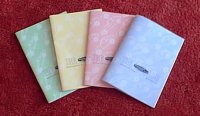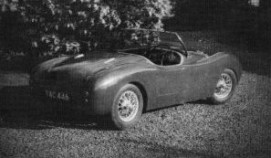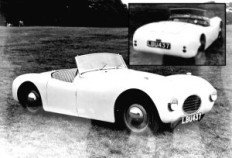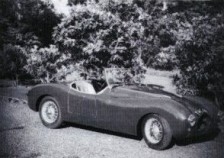
Welcome :
The Rochdale Owners Club was formed in June 1981 by a group of owners keen to establish a club exclusively for the Rochdale marque.
The Rochdale MkVI
Back in the early Fifties, proprietors Harry Smith and Frank Butterworth at Rochdale Motor Panels were well aware that the cost of an aerodynamic aluminium body was beyond the reach of many of their contemporaries racing on a shoestring in the 750 Motor Club, due to the time and skill required in hand-making each panel. When the new material, glassfibre, was introduced to Britain, they quickly recognised its potential for production of complex-shaped bodyshells. The RGS body launched in May 1953 proved that it could be done, and the race was on.
By March 1954 Rochdale was able to advertise a "full enveloping two-door sports shell. Up to 4ft 3in track. To appreciate these bodies a personal visit is recommended. 1s PO for photograph and particulars". The company offered the new shells for £75, not much less than a similar aluminium shell would have cost. Of course, glassfibre raw materials were expensive at first and others were equally expensive, the RGS selling for £92. By May, the body had been named the Mark VI earlier Marks being the mostly one-off alloy shells and the advert showed an attractive if slightly bulky-styled two-seater sporting machine, with headlight holes but, at first, no grille opening.
The factory brochure described the body as "made from the finest material available, and supplied in four parts, front and rear shells and two door shells". Considerable flexibility was offered in sizing of the shell, so that it could be fitted to a wide range of chassis. An oval, recessed grille opening could be provided at no extra charge. This presumably meant that a second mould had been made for the front end, incorporating the grille opening. In addition a bonnet could be cut and fitted with Dzus fasteners to the customer's specification for only £3 and mounting brackets could be bonded to the inside of the shell by arrangement.
Nevertheless, this was no more than it said: just a bare shell, the customer having to fabricate all his own bulkheads, inner wheelarches, etc. The brochure continued: "A quantity of resin and fibreglass is supplied free with each body for attaching brackets etc with full working instructions. As the responsibility of whether the body shell will fit any particular chassis lies with the purchaser, we strongly recommend a personal visit to our works by any doubtful purchaser". Though some early bodies were sold unpigmented, most Rochdale shells left the factory either ivory, red, light blue or British racing green, though it was always recommended that the body be sprayed for the ultimate appearance.
Probably the first Mark VI to be finished was SUG 55, built by journalist/engineer Allan Staniforth on a Buckler chassis. The car was built for club racing, with factory advice, and a photograph of it was used in later adverts and brochures for the Mark VI; a tuned Ford 10 engine was fitted and 90mph with 35-40mpg was claimed. The car survives today.
The Mark VI continued to be available right up to the great fire of February 1961. It continued to sell largely due to its adaptability and low price. As glassfibre bodies became more available and more sophisticated, Rochdale lowered the price of the Mark VI after only one year of production to £47 l0s, at which price it remained thereafter.
Rochdale claimed that this shell could be made to fit chassis with wheelbases from 6ft 9in (Austin Seven) to over 9ft, and offered in later brochures to split the shell and widen it for £5 extra. A 2in flange could also be bonded to the inside to enable easier fitment of wheelarches, for a further £4 extra. This adaptability was the key to the success of the Mark VI and examples have been fitted to chassis such as Buckler, CSC, Ford 10, Morris 8 and 12, Jowett Jupiter, Paramount, Rover 16, Cooper 500 and Thirties Triumph Dolomite! It is estimated that some 150 Mark VI shells were sold.
Copyright © Malcolm McKay - Early Rochdales Registrar
Copyright © Rochdale Owners Club
Last Update






